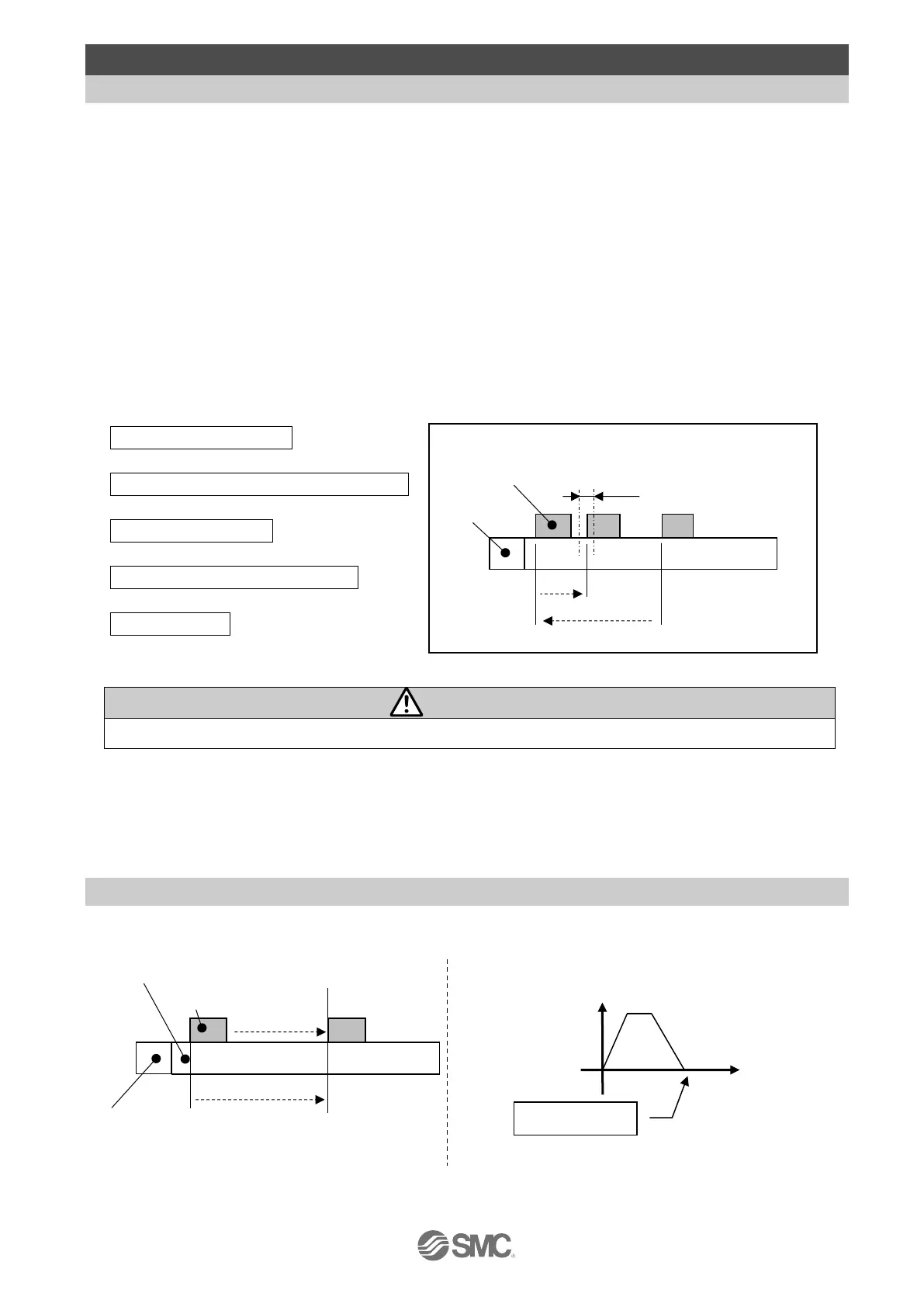- 49 -
8. Operations explanation
8.1 Return to origin
After entering the setting data, it is necessary to perform a return to origin operation before starting the
positioning or pushing operation. (To ensure the position of origin)
There are two types of return to origin operation.
(1) Return to origin mode using LECPA SETUP signal
The electric actuator moves in the return to origin direction (this direction is dependent on the electric
actuator) from the initial position at the moment of power-on: See (1) in the diagram below.
When the electric actuator reaches the end of travel limit it pauses for a short time. The driver
recognizes the position as the end of travel limit of the electric actuator. Then, the electric actuator
moves at a low speed in the direction opposite to the return to origin direction: See (2) in the diagram
below.
Return to origin signal
↓
Move in the return to origin direction
↓
Stop the movement
↓
Move in the opposite direction
↓
Origin position
(2) Return-to-origin function of PLC (such as a positioning unit)
Refer to the PLC operation manual (such as a positioning unit). When using the return-to-origin
function of the PLC (such as a positioning unit), the LECPA’s SETON is always turned OFF.
8.2 Positioning operation
Positioning according to the input pulse signal.
● Positioning operation (Example) ● Positioning operation [Speed/ Position] (Example)
Electric actuator
Load Speed
Position
Motor Origin position Target position
